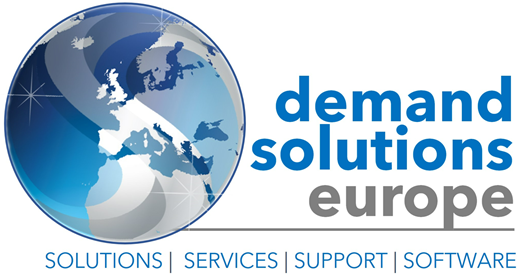
Get data out of the spreadsheets and into a connected PLATFORM for the whole supply chain
If 2020 proved anything to supply chain companies, it is that the days of using spreadsheets to manage and forecast demand are numbered. The tool is too static, too rigid, relies on too few data sources, and doesn’t automatically react to changes in your supply chain. In short, it’s not fit for purpose.
The good news is that there’s a solution to take its place: connected platforms for the whole supply chain. These address many of the limitations of traditional spreadsheet approaches while also empowering supply chain firms to adapt to change. They allow you to deal with the world in terms of how it is, not how it should be.
If you’re still on the fence, wondering whether transitioning away from spreadsheets is the right choice for you, then the following discussion will help. We look at some of the compelling reasons why you need to get your data out of spreadsheets and into more connected (and frankly holistic) platforms.
Become more adaptable
Businesses have been through a lot over the last twelve months. COVID-19 began disrupting Chinese supply chains as far back as January 2020, and the problems have only multiplied since then.
Uncertainty is the main problem. Businesses don’t know what governments will do next. Right now, it seems like no policies are off the table, including shutting down entire economies.
Old planning solutions aren’t much help in an environment like this. Most companies are implementing solutions that address resources, opportunities, and challenges at a specific moment in time – a snapshot. They’re not using dynamic, flexible, or reactive systems that deal with the kind of step-changes we see in business conditions right now.
We can see these limitations in the way that many top-tier businesses are currently implementing their demand planning solutions. So many are using a patchwork of Excel, email, third-party collaboration, and business intelligence tools instead of integrated solutions, destroying their efficiency and adaptability. Users are rarely getting the capabilities they need.
Evolutionary biologist, Charles Darwin, noted that the most adaptable species tend to be the ones that survive. The same is true of businesses in today’s supply chain.
And, interestingly, most leaders appear to agree. Data from Statista suggests that 41 percent of companies are switching to the cloud to improve their availability and resiliency, with a further 39 percent citing improved adaptability and responsiveness. Executives appear to want integrated cloud solutions, yet many are failing to apply them to demand planning.
Remember, being adaptable helps with your integrated business planning (IBP) endeavors. Providing staff with connected planning systems makes it easier for them to connect the dots, contact the right people, and proactively react to supply chain shocks. It allows them to think intelligently at all levels of the organization.
Fix your forecasting
Demand planning teams are also struggling to interpret demand signals at the moment. In some cases, consumers are ordering vast quantities of goods, but the demand is transitory. Customers are “stocking up” on products (because of the current situation), but they don’t intend to continue buying in the same quantities in the future.
Thus, many managers in the supply chain are experiencing a sense of profound skepticism about the ability of their old analytics to perform in this new environment. Demand might be high in the short-term, but that doesn’t mean it will continue to be so in the long-run.
Fixing your forecasting involves moving away from spreadsheets, and implementing the following:
- Dynamic monitoring of forecasts to react quickly to errors
- Integrated market intelligence that goes beyond using past data to predict future outcomes
- Advanced statistical tools to accurately present base demand
- Granular demand forecast decisions that inform sales teams, supply chain managers, and executive strategy
Putting these strategies in place immediately changes the nature of forecasting. But it requires a new approach. Spreadsheets simply won’t suffice.
Create impact quickly – and at a low cost
Studies suggest that demand planning has a rapid time to impact. Once you improve your systems, you can improve your EBIT in a matter of weeks – just what many companies need right now.
Many supply chain companies don’t realize this, and it’s creating weird, false economies. For instance, a lot of top-tier brands are investing heavily in software tools and robots. But they leave demand management – the essence of any supply chain business – to manual processes.
C-suite executives, for instance, are prepared to invest in robots – a technology with uncertain payoffs – but not in simple, cloud-based demand planning software with an excellent track record. It seems strange that many are willing to continue performing important business calculations manually in spreadsheets – with all their inherent flaws – instead of equipping themselves with tools made for the job.
What’s even more remarkable is that everyone already knows the problems with this approach. Oracle, for instance, reports that more than 90 percent have errors. And it is well known in psychology circles that people forget about 50 to 80 percent of what they learn after a day, and between 97 and 98 percent after a month. Still, for whatever reason, managers are happy to continue relying on planners’ memories and manual entry for supply chain management and administration.
There’s also an opportunity cost associated with the manual approach. Planners who spend all their time building spreadsheets leave less time to think about the real-world demand scenarios facing the business. Instead of applying proper knowledge to the supply chain, they’re just going through the motions, entering data, and hoping for things to work out.
We should not however dismiss using spreadsheets entirely. There are times when it can be appropriate. After all, half a billion people use Excel every day and 81 percent of firms rely on the software to function. However, it’s not a panacea. When it comes to demand planning, there are better, more scalable options available.
If you’d like to discuss how your business can escape out-moded spreadsheet demand planning and into something more sophisticated, then get in touch. We provide solutions that allow you to start building resilience and adaptability into your forecasts.


